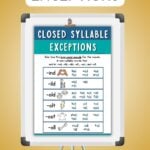Teaching Closed Syllable Exceptions
This post may contain affiliate links. As an Amazon affiliate, we earn from qualifying purchases.
Do you know about closed syllable rule breakers? They don’t want to follow the rules! Read on to learn about closed syllable exceptions, why they exist, and simple ways to teach them. You’ll also get a free poster for display!
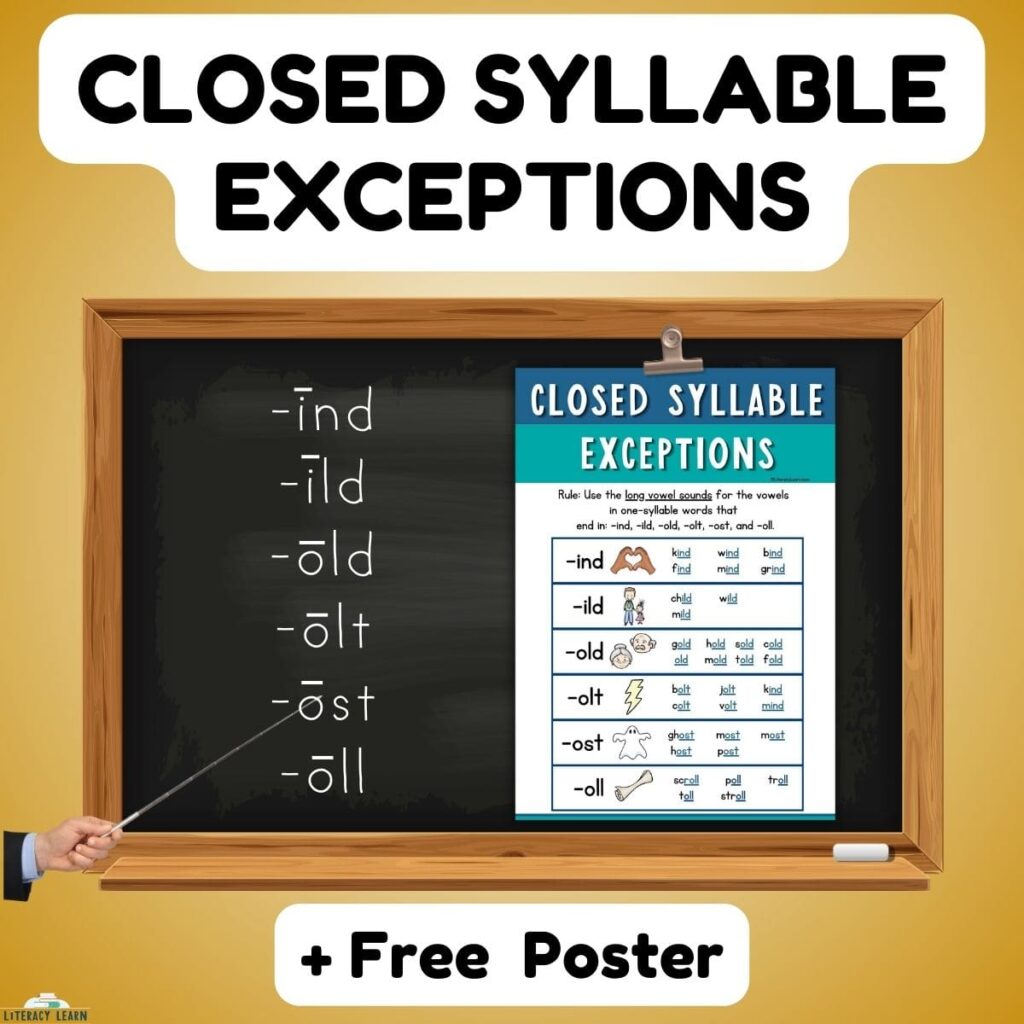
Closed Syllables
Before we get into what the exceptions are, it’s important to first know what a closed syllable is. So let’s start with a simple review.
A closed syllable is a word part where the vowel is closed in by one or more consonants, resulting in a short vowel sound. We get the term closed syllable because the vowel is closed in by the consonant(s). Closed syllables are the most common syllable type in English.
📖 Read our post to go in-depth and learn all about closed syllables.
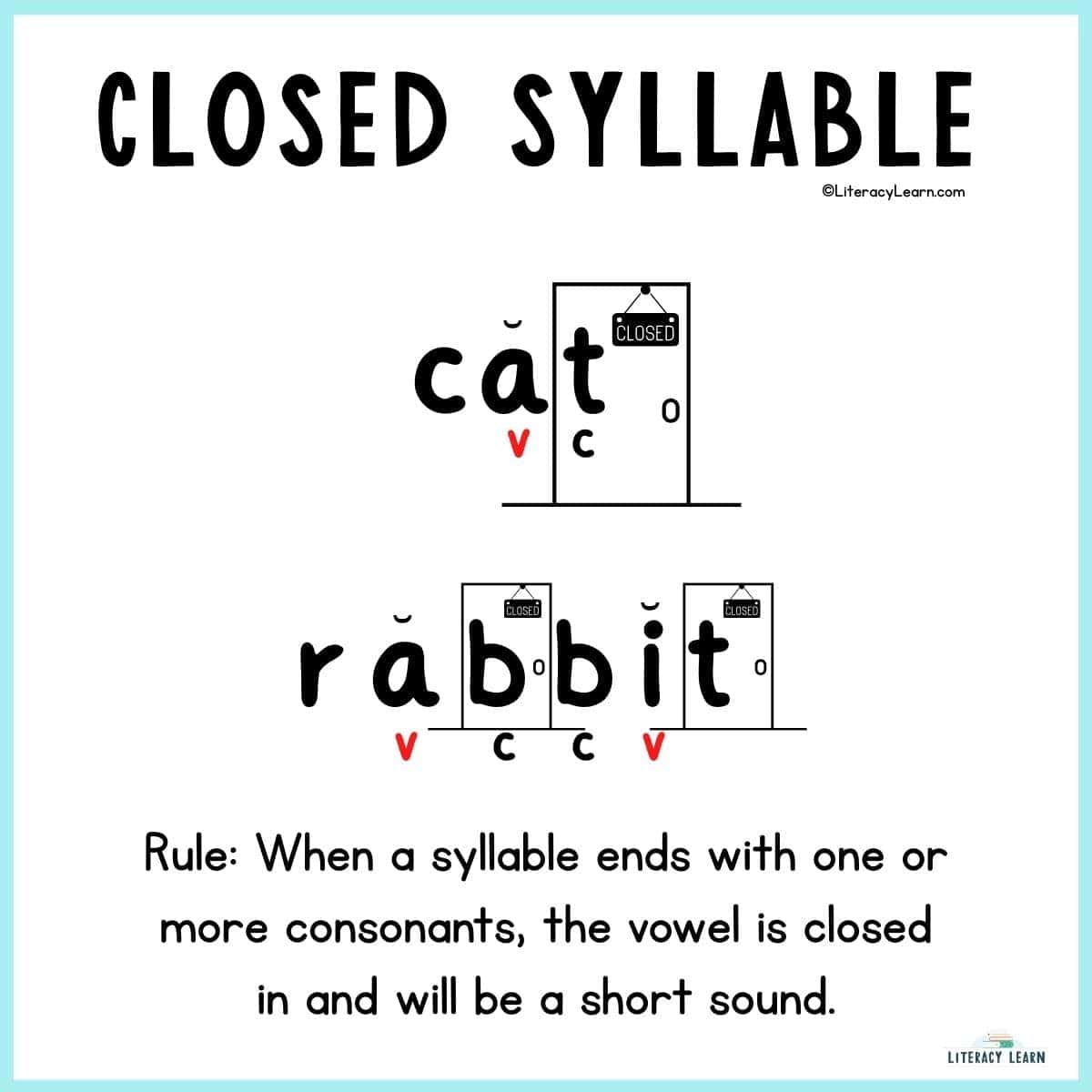
While the patterns that make up closed syllable words are very reliable, there are some exceptions. And that’s why you’re here today!
Closed Syllable Exceptions
Closed syllable exceptions are words that look like regular closed syllables, but instead of the vowel representing a short sound, the vowel sound is long.
These long sounds occur in just a few specific letter patterns at the end of a closed syllable.
These letter sequences include: ild, ind, oll, old, olt, and ost.
Words like wild, kind, troll, old, bolt, and post are closed syllable exception words because they have a long vowel sound. That’s why they’re called closed syllable exceptions.
Some other terms for closed syllable exceptions are “Kind, Old Words,” “Ghost and Troll Words” or “Wild, Old Words.”
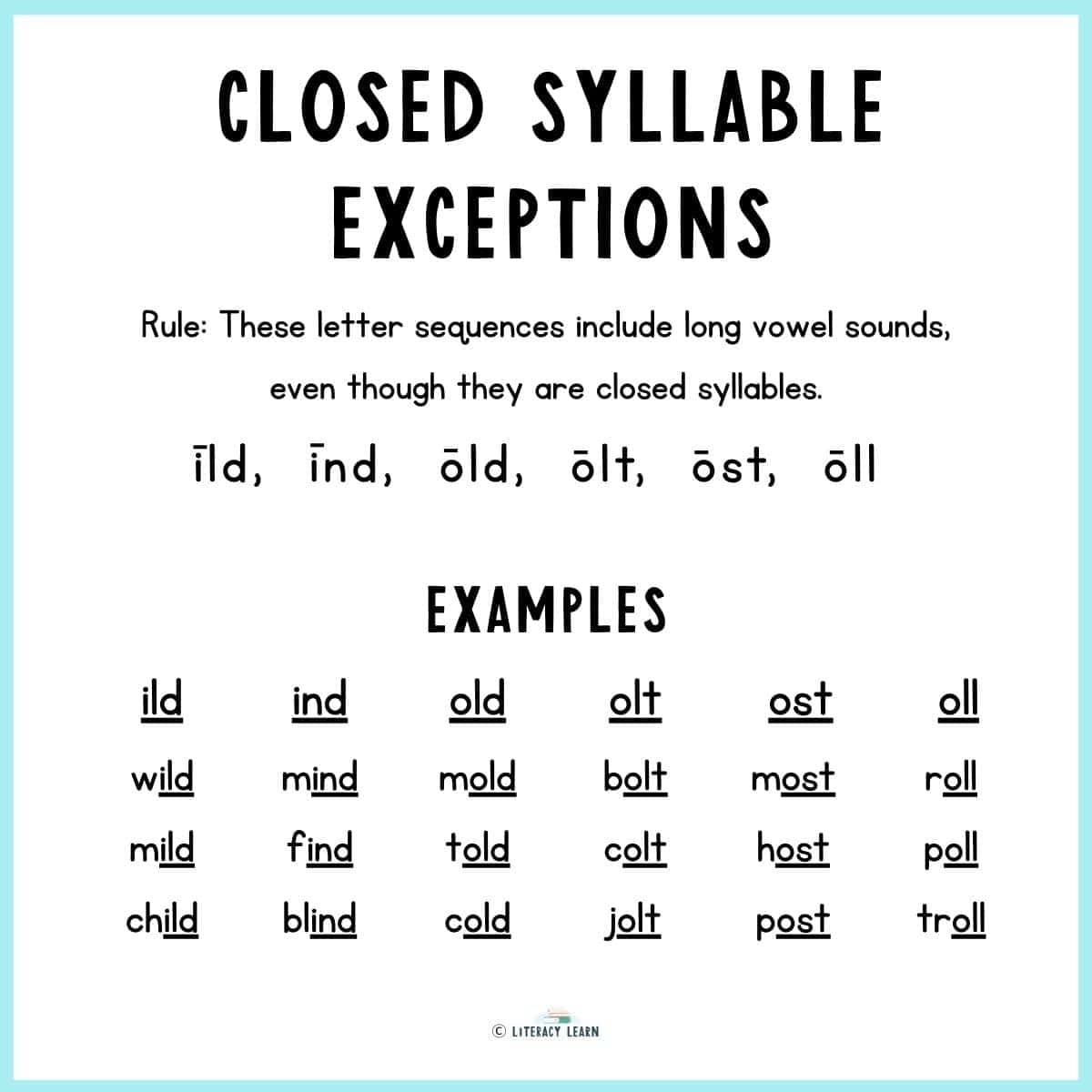
Closed Syllable Exception Words
Here is a list of Closed Syllable Exception Words, organized by word family.
| –ild | –ind | –old | –olt | –ost | –oll |
| wild | blind | cold | colt | most | roll |
| mild | mind | old | molt | post | troll |
| child | find | hold | bolt | host | poll |
| kind | fold | jolt | ghost | knoll | |
| grind | sold | holt | stroll | ||
| rewind | gold | scroll | |||
| bind | bold | ||||
| rind | mold | ||||
| hind | scold |
Unfortunately, there are just a few exceptions to the exception. They include words like cost, lost, frost, and wind (wind with a short i sound).
Why We Teach Closed Syllable Exceptions
- Teaching this concept prevents confusion. If students are taught that closed syllables will have short vowel sounds, they may make errors when reading or spelling. They may read words like kind as “kĭnd” or spell ‘gold’ as ‘goald.’
- Builds flexibility: When teaching closed syllable exceptions, kids learn that certain patterns may result in a different vowel sounds. This helps them know that they should be okay with flexing the vowel sound as they decode unknown words.
- No memorization: Instead of relying on memorizing a list of words for reading and spelling, kids can apply this knowledge that these particular closed syllable word families will have long vowel sounds.
- Connects phonics and etymology: Kids begin to understand how history impacts our language (both spelling and pronunciation). Some students may actually find this very interesting (keep reading to learn more.)
To summarize, we teach closed syllables so that kids understand more deeply about how our language works and learn to be flexible with certain concepts, such as syllable types and vowel sounds.
Teaching Tips
- Teach about closed syllable exceptions only after kids understand closed syllables. Don’t introduce them together as this could be quite confusing. Exceptions are generally appropriate to teach when kids are learning about ending blends, floss words, and long vowel sounds (middle to end of first grade.)
- Whenever possible, teach kids that English isn’t random or illogical. When you introduce closed syllable exceptions to students, a brief history lesson may help:
Explain that these words are “fossils” of very old Anglo-Saxon words. Even when pronunciations changed over the past few hundred years, the spellings remained the same. The spellings were etched in stone (aka dictionaries) … just like fossils! - Use a Memory Hook: My students LOVE a good memory hook to help them remember these concepts. When I introduce students to closed syllable exceptions, I tell them about this one:
“A child will bind an old troll and colt to the post.”
I have students write this in their phonics notebooks and then illustrate it. Some drawings turn out to be quite hilarious (and memorable…which is the whole point!) - Use explicit teaching and give kids lots of practice applying this knowledge using activities for reading and spelling closed syllable exception words. Keep reading for some helpful ideas.
Activities for Teaching Closed Syllable Exceptions
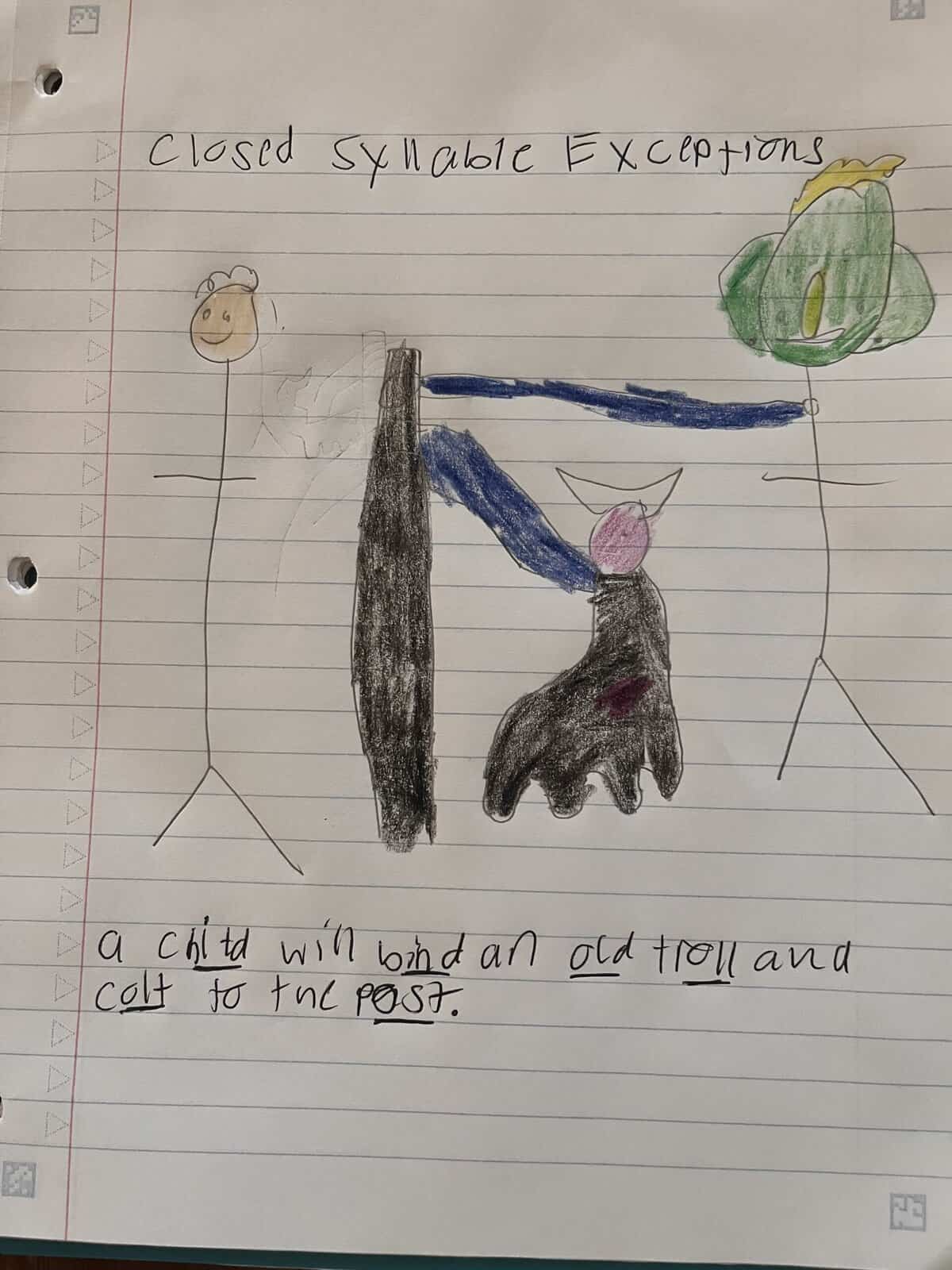
Below are some research-based activities for teaching closed syllable exceptions.
- Read decodable sentences and stories that include a lot of these words.
- Use sound boxes for encoding practice. Dictate word to students and have them practice spelling the long vowel sound with a single vowel letter.
- Use word ladders to build awareness of these chunks and letter sequences.
- Use word sorts and games to reinforce the long vowel sounds heard in these words.
- Use anchor charts for display and to reinforce these concepts.
Related Resources
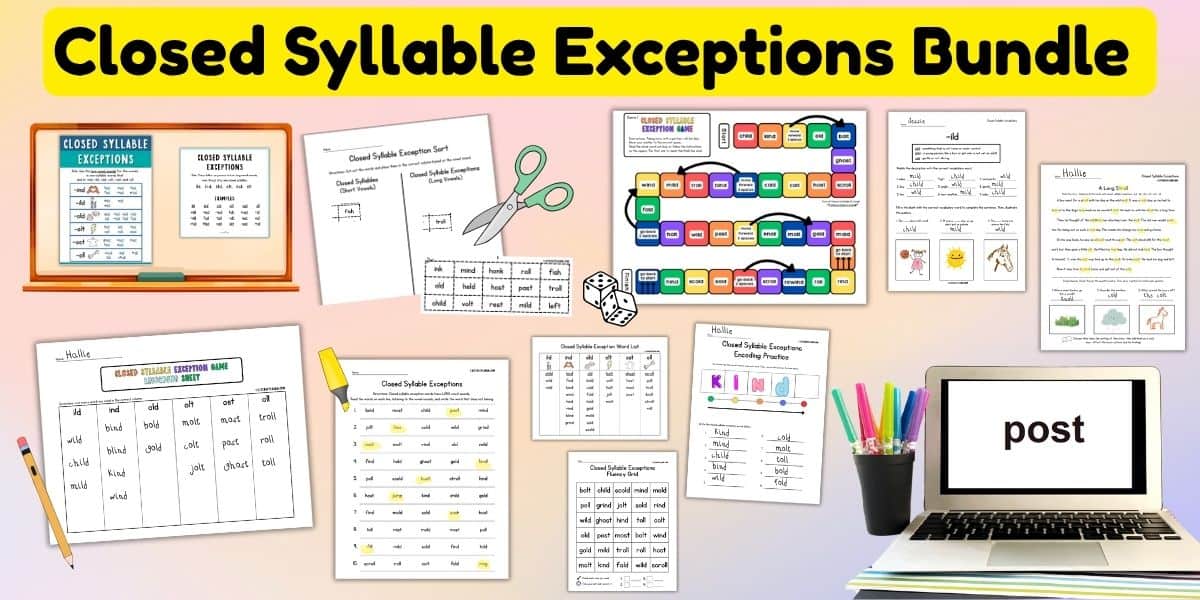
- Get TONS of Closed Syllable Exception Resources (pictured above!) 👆
- Visit our TPT shop to get 10 more Phonics Posters to match the free poster, or get them from the Unlimited library!
Download & Print
DOWNLOAD TERMS: All of our resources and printables are designed for personal use only in homes and classrooms. Each teacher must download his or her own copy. You may not: Save our files to a shared drive, reproduce our resources on the web, or make photocopies for anyone besides your own students. To share with others, please use the social share links provided or distribute the link to the blog post so others can download their own copies. Your support in this allows us to keep making free resources for everyone! Please see our Creative Credits page for information about the licensed clipart we use. If you have any questions or concerns regarding our terms, please email us. Thank you!
➡️ Get MORE FREE Resources: Open & Closed Syllable Activity.

